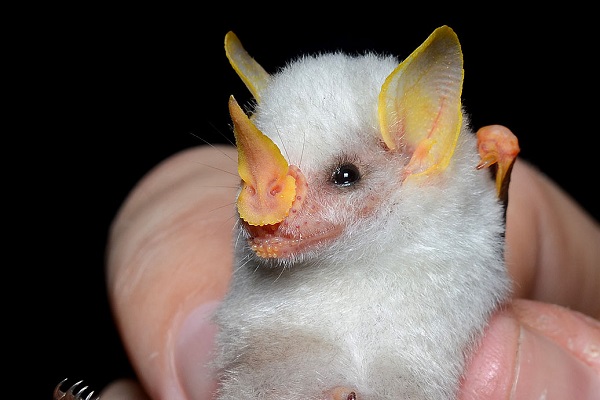We have already seen some of the world’s most unusual bats on this blog, but these ten are said to be some of the world’s rarest. While many of these species of bats are at risk of extinction there are conservation efforts to save most of them. If you love the birds of the night, you will love all of these ten…

The Seychelles Sheath-tailed Bat (Coleura seychellensis)
This bat is, of course, most notable thanks to its long flap of skin on its hind legs. It is the increase of coconut palms that have caused this species to be on the endangered list as it has reduced the number of native plants that the bats like to eat.

Brown Long-eared Bat (Plecotus auritus)
Worldwide there are enough breeding pairs of this species for it not to be a concern, but meanwhile, here in the UK, its numbers have been in decline for years thanks to increasing housing and intense farming destroying the insects these bats like to eat.

The Honduran White Bat (Ectophylla alba)
There are hundreds of albino while bats that can be found all over the world, but this species is all white! But this species is most notable thanks to its large nose-leaf that easily distinguishes from others. Although the white coloring is also a bit of a giveaway. While not terribly endangered its numbers are on a rapid decline, but conservation efforts are well underway to protect it.

The Florida Bonneted Bat (Eumops floridanus)
There is a very good reason that this bat is so endangered and this is because it is also the species that live in the smallest geographical distribution. This means they don’t go far at all, in fact, it is thought the area might be less than a 50-mile radius so even the smallest changes in their environment cause big problems.
[adinserter block=”7″]

Cuban Greater Funnel-eared Bat (Natalus primus)
This species was thought to have been OK, but a recent survey assessed them as in decline. This is mostly down to them living in a single remote cave in western Cuba where poachers can easily collect them. But they are a protected species so there is at least hope for it.

The Western Barbastelle Bat (Barbastella barbastellus)
You might think a bat also called the ‘common European bat’ wasn’t in danger, but this small, short-nosed bat has been in decline and this is mostly down to its numbers being so spread out across Europe. But there are small families of this species that do give conservationists hope that they will grow in numbers given time and location protection.

Grey-headed Flying Fox (Pteropus poliocephalus)
This is not only one of the largest species of bats, but it is also one of the oldest living with many of them living for 20 years plus. But sadly the increasing number of wild-fires has bene putting this species under some threat, but the good news is Australia is putting massive efforts into the conservation of them and their habitat.

The Virginia Big-eared Bat (Corynorhinus townsendii)
This is, in fact, one of two species of Townsend’s big-eared bat, but it is the one that is the most endangered with paring numbers in the low hundreds. Their biggest problem is that they are very upset and disturbed by even the slights of noises or lights and as we humans invade their habitat this leads to more of them being too afraid to breed.
[adinserter block=”8″]

Mariana Fruit Bat (Pteropus mariannus)
Most people know this species as the ‘flying fox’ and it is one of the world’s biggest species of bats. But its large size also means it needs more to eat and all that fruit is a drain on regional resources that are already in decline for other reasons leading to this species number less than 300 breeding pairs. But there are worldwide efforts to breed the species and return them to the wild.

The Giant Golden-crowned Flying Fox (Acerodon jubatus)
We finish this post with the world’s largest species of bats and also one of the most endangered. There are now laws protecting this giant bat from poachers, but human disturbance from tourists is still a major problem. Let’s just hope this species and indeed all of them on this list are around for future generations to enjoy.
Sources Used…
- https://www.independent.co.uk/environment/rare-species-of-long-eared-bat-faces-extinction-as-only-1000-remain-8746290.html
- https://bestlifeonline.com/rarest-animals-on-earth/
- https://en.wikipedia.org/wiki/Honduran_white_bat
- https://www.wlrn.org/post/rare-florida-bat-needs-your-help
- https://news.mongabay.com/2019/09/nail-paint-helps-researchers-estimate-numbers-of-rare-cuban-bat-species/
- https://en.wikipedia.org/wiki/Western_barbastelle
- https://www.doi.gov/blog/9-coolest-bat-species-united-states
- https://en.wikipedia.org/wiki/Grey-headed_flying_fox